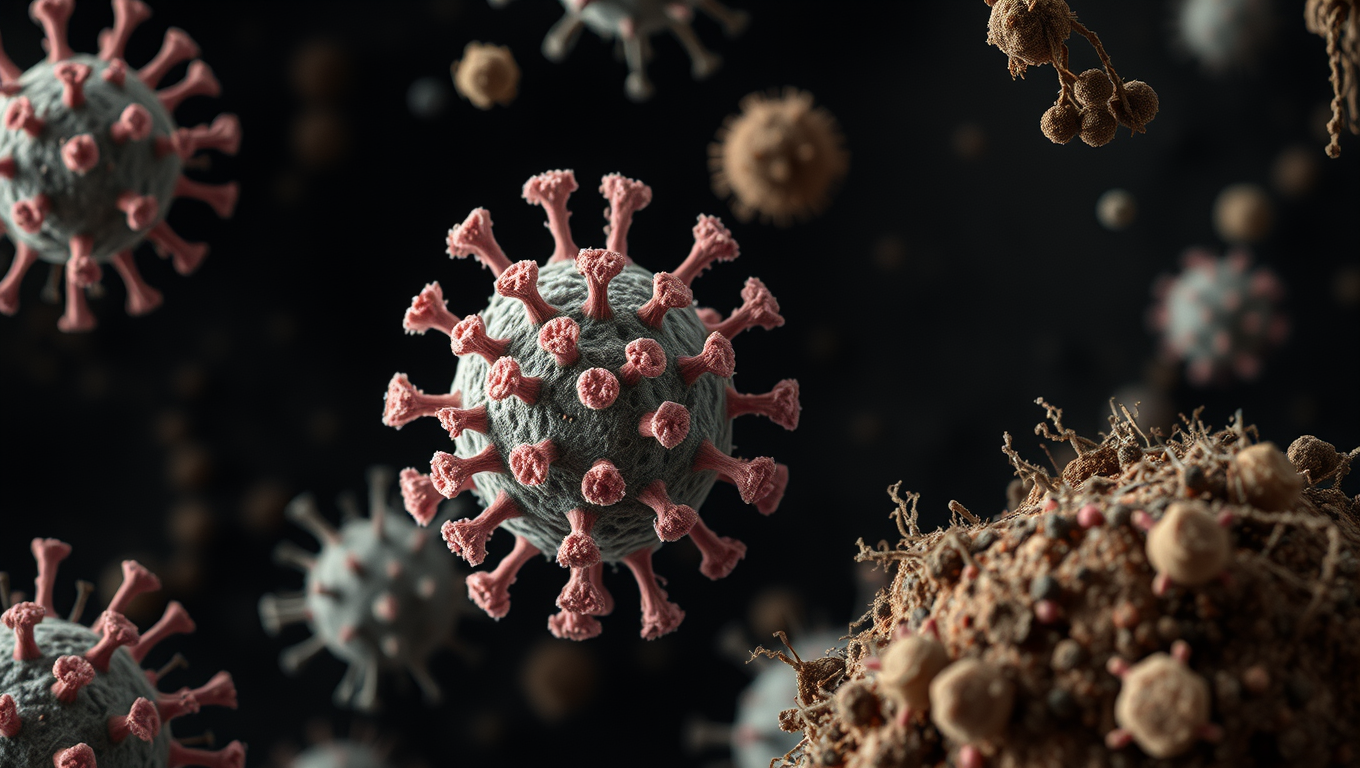While we try to keep things accurate, this content is part of an ongoing experiment and may not always be reliable.
Please double-check important details — we’re not responsible for how the information is used.
Fungus
The Hidden World of Giant Viruses: Unveiling a New Resident in Finland’s Soil
Researchers have isolated a giant virus, which was named Jyvaskylavirus. The discovery shows that giant viruses are more common in northern regions than researchers have thought. It also illustrates that there are still many structures whose origins and functions have not been properly studied.

Dogs
“Dogs as Conservation Detectives: Unleashing the Power of Citizen Scientists in Fighting Invasive Species”
Dogs trained by everyday pet owners are proving to be surprisingly powerful allies in the fight against the invasive spotted lanternfly. In a groundbreaking study, citizen scientists taught their dogs to sniff out the pests’ hard-to-spot egg masses with impressive accuracy. The initiative not only taps into the huge community of recreational scent-detection dog enthusiasts, but also opens a promising new front in protecting agriculture. And it doesn’t stop there—these canine teams are now sniffing out vineyard diseases too, hinting at a whole new future of four-legged fieldwork.
Biochemistry Research
The Whispering Womb: Uncovering the Secret Language of Embryonic Cells
Scientists found that embryonic skin cells “whisper” through faint mechanical tugs, using the same force-sensing proteins that make our ears ultrasensitive. By syncing these micro-movements, the cells choreograph the embryo’s shape, a dance captured with AI-powered imaging and computer models. Blocking the cells’ ability to feel the whispers stalls development, hinting that life’s first instructions are mechanical. The discovery suggests hearing hijacked an ancient force-sensing toolkit originally meant for building bodies.
Animals
“New Bat-Borne Viruses Discovered in China Pose Potential Pandemic Threat”
Two newly discovered viruses lurking in bats are dangerously similar to Nipah and Hendra, both of which have caused deadly outbreaks in humans. Found in fruit bats near villages, these viruses may spread through urine-contaminated fruit, raising serious concerns. And that’s just the start—scientists found 20 other unknown viruses hiding in bat kidneys.
-

 Detectors8 months ago
Detectors8 months agoA New Horizon for Vision: How Gold Nanoparticles May Restore People’s Sight
-

 Earth & Climate9 months ago
Earth & Climate9 months agoRetiring Abroad Can Be Lonely Business
-

 Cancer8 months ago
Cancer8 months agoRevolutionizing Quantum Communication: Direct Connections Between Multiple Processors
-

 Albert Einstein9 months ago
Albert Einstein9 months agoHarnessing Water Waves: A Breakthrough in Controlling Floating Objects
-

 Earth & Climate8 months ago
Earth & Climate8 months agoHousehold Electricity Three Times More Expensive Than Upcoming ‘Eco-Friendly’ Aviation E-Fuels, Study Reveals
-

 Diseases and Conditions9 months ago
Diseases and Conditions9 months agoReducing Falls Among Elderly Women with Polypharmacy through Exercise Intervention
-

 Chemistry8 months ago
Chemistry8 months ago“Unveiling Hidden Patterns: A New Twist on Interference Phenomena”
-

 Agriculture and Food8 months ago
Agriculture and Food8 months ago“A Sustainable Solution: Researchers Create Hybrid Cheese with 25% Pea Protein”





























